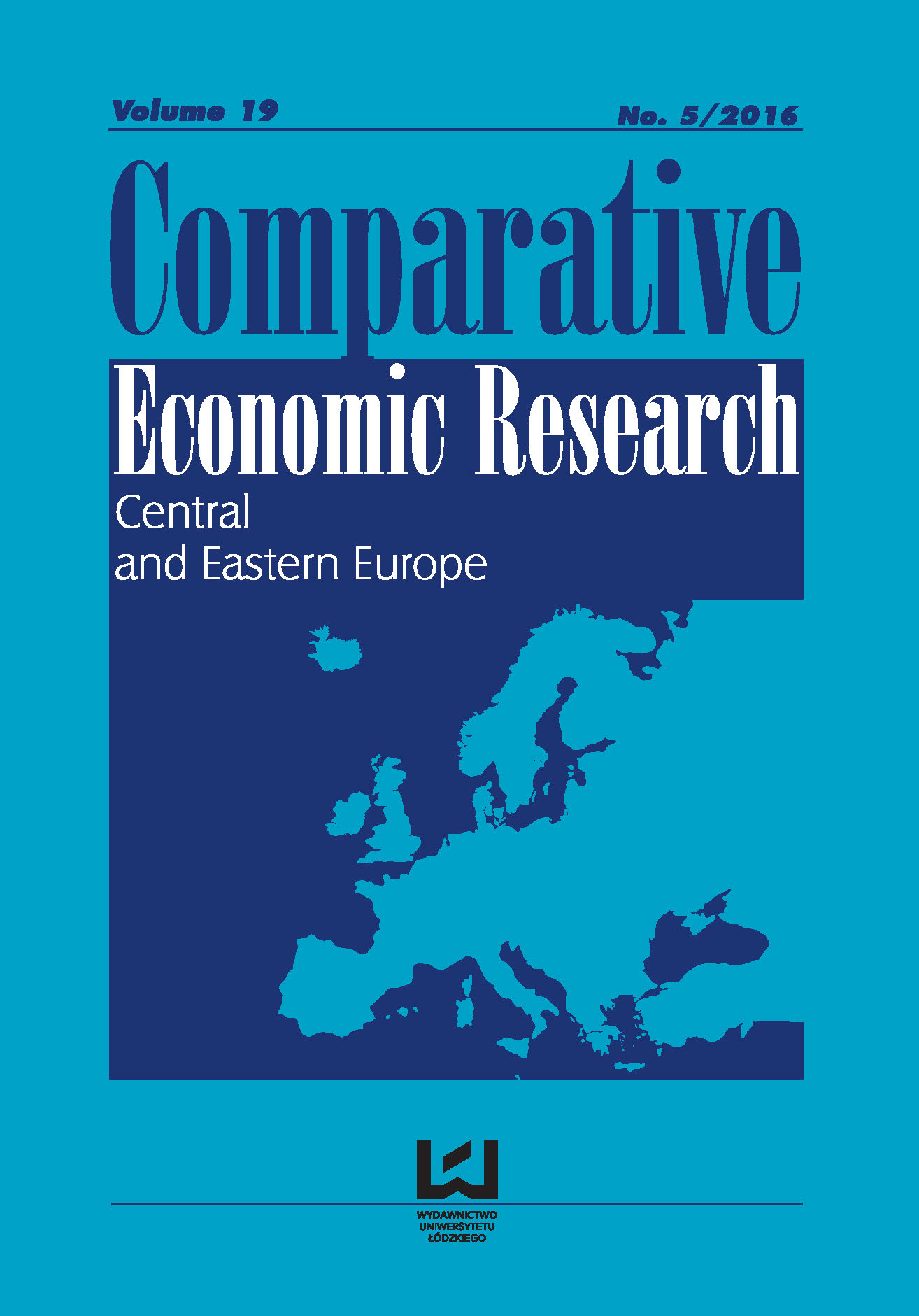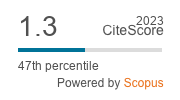The Spatial Autocorrelation Analysis For Transport Accessibility In Selected Regions Of The European Union
DOI:
https://doi.org/10.1515/cer-2016-0036Keywords:
spatial autocorrelation, transport accessibility, Moran’s I statisticAbstract
In view of the significant differences between the socio-economic regions, the level of development of transport is not homogenous. According to Tobler’s law (1970) we can point out that all objects are related to each other, but the ones located closer are more dependent on each other than those farther away. Then we can identify the occurrence of spatial autocorrelation. For example, the European regions can assess whether the border regions of different countries show a similarity to each other.
The main purpose of this article is to assess and analyze the occurrence of spatial autocorrelation in connection with the transport accessibility (measured by density of a motorway network). The general hypothesis is: between European regions, there is a positive spatial autocorrelation in connection with the problems of transport accessibility. Research subjects are selected European regions at NUTS level 2. To evaluate the occurrence of spatial autocorrelation the classic Moran I statistic has been used.
Downloads
References
Black J., Conroy M. (1977), Accessibility Measures and the Social Evaluation of Urban Structure, ʻEnvironment and Planningʼ, A 9.
Google Scholar
Cocdeco-Melhorado A., Reggiani A., Gutierrez J. (2014), Accessibility and Spatial Interaction, Edward Elgar, Cheltenham, Northampton.
Google Scholar
Dalvi M.Q., Martin K.M. (1976), The measurement of accessibility: some preliminary results, Transportation, 5.
Google Scholar
Geurs K.T., van Wee B. (2004), Accessibility evaluation of land-use and transport strategies: review and research directions, ʻJournal of Transport Geographyʼ, 12.
Google Scholar
Geurs K.T., Krizek K., Reggiani A. (2012), Accessibility analysis and transport planning. Challenges for Europe and North America (Nectar Series on Transportation and Communications Network Research). Cheltenham, UK: Edward Elgar Publishing Ltd.
Google Scholar
Guzik R. (2003), Przestrzenna dostępność szkolnictwa ponadpodstawowego, Instytut Geografii i Gospodarki Przestrzennej UJ, Kraków.
Google Scholar
Hansen W. (1959), How Accessibility Shapes Land-use, ʻJournal of the American Institute of Plannersʼ, 25 (2).
Google Scholar
Ingram D.R. (1971), The concept of accessibility: a search for an operational form, ʻRegional Studiesʼ, 5.
Google Scholar
Kopczewska K. (2011), Ekonometria i statystyka przestrzenna z wykorzystaniem programu R CRAN, CeDeWu, Warszawa.
Google Scholar
Koźlak A. (2012), Nowoczesny system transportowy jako czynnik rozwoju regionów w Polsce, Published by Uniwersytet Gdańskiego, Gdańsk.
Google Scholar
Longman Dictionary of Contemporary English (2014), Longman.
Google Scholar
Rosik P. (2012), Dostępność lądowa przestrzeni Polski w wymiarze europejskim, Instytut Gospodarki i Przestrzennego Zagospodarowania Kraju, Warszawa.
Google Scholar
Rosik P., Szuster M. (2008), Rozbudowa infrastruktury transportowej a gospodarka regionów, Wydawnictwo Politechniki Poznańskiej, Poznań.
Google Scholar
Rydzkowski W., Wojewódzka-Król K. (2010), Transport, PWN, Warszawa.
Google Scholar
Spiekermann K., Neubauer J. (2002), Accessibility and Peripherality: Concepts, Models and Indicator, Nordregio.
Google Scholar
Suchecki B. (2010), Ekonometria przestrzenna. Metody i modele analizy danych przestrzennych, C. H. Beck, Warszawa.
Google Scholar
Suchecka J. (2014), Statystyka przestrzenna. Metody analizy struktur przestrzennych, C. H. Beck, Warszawa.
Google Scholar
Vickerman R.W. (1974), Accessibility, Attraction and Potential: a Review of Some Concepts and Their Use in Determining Mobility, ʻEnvironment and Planningʼ, A 6.
Google Scholar
Załoga E. (2013), Trendy w transporcie lądowym Unii Europejskiej, Wydawnictwo Naukowe Uniwersytetu Szczecińskiego, Szczecin.
Google Scholar
Downloads
Published
How to Cite
Issue
Section
License

This work is licensed under a Creative Commons Attribution-NonCommercial-NoDerivatives 4.0 International License.











